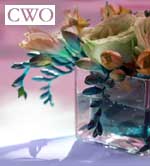And I thought All My Children was a soap opera. Indeed, Erica Kane has nothing on the late Princess of Wales and the latter’s tumultuous, tortured relationship with the British monarchy embodied by the stiff-upper-lip stoicism and self-absorbed myopia of the House of Windsor. This biography by acclaimed British “investigative writer” Andrew Morton, bears the unfortunate title of Diana: In Pursuit of Love (Michael O’Mara Books Limited, 2004). Depending upon which side of the warring Waleses one sympathizes with, a more accurate heading may have been : Diana: Queen of Hearts?, Diana: Goddess of the Hunt, Saint Diana: The People’s Princess, or Diana: Royal Nutcase.
Whatever else may be the case regarding the late Princess, Morton’s meticulously researched and painstakingly documented account of Diana’s last five years of life is even-handed and so thorough it could choke a whale. Morton tries hard not to take sides in the famous Windsor vs. Diana wars, but his affection for and admiration of the Princess is evident throughout the pages of this 302 page tome. It includes an Introduction, Prologue, and Epilogue. If the author’s name sounds familiar, it should. Hand-selected by Diana as her chosen biographer, Andrew Morton wrote the controversial Diana: Her True Story with Diana’s secret collaboration. Published in 1992, the book stood the public’s perception of both the Princess and the British monarchy on its ear.
In Diana: In Pursuit of Love, Morton offers a finely drawn portrait of an intensely complicated young woman who was both vilified and adored by those inside and outside the royal family. Morton writes as a reporter chronicling the ups and downs of the Princess’s up-and-down life. Chapters include Hard Road to Freedom, the Year of Living Dangerously, In Search of Love, a Princess to the World, Fakes, Forgeries and Secret Tapes, the Long Goodbye, The Crowning of the Queen of Hearts, The Final Odyssey, and the Curse of the Lost Princess. Writes Morton:
“She was a curious, and for many, an unsettling combination – a sophisticated woman of the world able to discuss death and dying with the Archbishop of Canterbury one minute, yet innocent of the ways of the world. A socially accomplished woman who could face a sophisticated cocktail party, she had never been to a pub on her own, and neither could she boil a pan of pasta.” (p. 73).
Numerous suggestions are made that Diana had a “sheltered upbringing” and was “very immature when she married,” but it turned out that she wasn’t as malleable as the Windsor thought. It appears that neither side in the “Warring Waleses” (as well as their supporters) understood nor knew what to do with the other, and both gave as good as they got. Even so, some characters in this royal rigmarole qualify as “stand-outs”: Paul Burrell, Diana’s former butler, who once worked for Prince Charles, comes off looking like a target for skunk spray. Prince Philip appears cold, distant, and demanding. Sarah Ferguson, the Duchess of York, is conniving, two-faced and ingratiating. Prince Charles is a narcissistic, pompous stuffed-shirt with all the warmth of an Inuit igloo. The Queen Mother is positively Antarctic. The only member of the monarchy who looks like another other than an exhibit at the wax museum is the Queen, who seemed determinedly above the fray, exhibiting a dignified detachment or “ostriching” – Diana’s term.
A frequent theme throughout this tome, which includes a Timeline of Diana’s life, a Bibliography of some thirty-five additional sources and eleven=page Index, is Diana as a “woman driven by her emotions” who trusted her “instincts” more than her intellect. Diana is described as “sharp-witted, strikingly attractive and capricious” with a “superficial sociable cheeriness beneath which lay a deep-seated sadness, usually well-hidden.”
Diana reportedly bridles at attempts by the royal family to paint her as mentally and/or emotionally unstable. However, if Pursuit is accurate, they had plenty of ammo: calling male and female friends twenty times a day (or more) “in need of comfort or advice,” clandestine meetings with married men such as art dealer Oliver Hoare and rugby star Will Carling, immersing herself in the lives of men whom she was attracted to – usually married - to the point of obsession, and other behaviors that many might consider neurotic or just plain kooky. Morton is lavish in his explanation of Diana’s behaviors during the Kensington Palace in-fighting, frequently citing “royal pressure” or something similar. Justly or otherwise, Diana may have earned some of her own headlines as a “home wrecker” or descriptions as a “bored, manipulative and selfish princess” (p. 123) who “needed constant reassurances that she was loved” (p. 124).
According to Pursuit, Diana was an outsider before, during and after she left the “constraining, invasive and alienating” life of Kensington Palace. In the royal kerfuffle surrounding the Waleses collapsed marriage – and there’s plenty of blame to go around – Morton cites matters that may have made the disintegrating ties insurmountable – Charles’ adultery and the tight-lipped, manipulative, cliquishness of his family and staff.
Morton includes a sizeable chunk of Diana’s personal vision, post-divorce, as she sought to carve out a role for herself independent of Buckingham Palace, including her frequent visits to the homeless and hospices. “These visits were part of her healing process” writes Morton. “In the world she lived in, everyone’s motives were suspect; everyone had an agenda, either to influence her judgments or further their own careers and lives. On the other hand, the people she was visiting lived in a different world – one which had no hold over her.” And “The Princess’s day-to-day life was filled with rumor and hearsay of plots and counterplots. Rarely a day went by at Kensington Palace without there being some excursion and alarm” (p. 79)
A perhaps unintentional view of Diana may emerge that some readers, particularly non-British, may garner: spoiled rich kid. The sheer volume of resources Diana availed herself of as she strove to “discover herself” would stagger the average person: voice coaches, speech writers, masseurs, hair dressers, security details, press secretaries, ladies-in-waiting, therapists, interior designers, personal trainers, and chauffeurs, and so on is immense and ever-changing. Not to mention the yacht cruises, vacations in Paris, worldwide travel and life in the lap of luxury that apparently come with a Windsorian title may leave some readers shaking their heads.
The book also chronicles the “whispering campaigns” against Diana launched “from St. James’ Palace” (Prince Charles’ camp). Endless descriptions of Diana as “incredibly lonely and depressed” or “a deeply troubled young lady” prior to her separation from Charles are just that – endless. (Some may deem them tedious.) Morton also narrates Diana’s difficult relationship with her grandmother, Lady Ruth Fermoy, “a close friend of and lady-in-waiting to Queen Elizabeth and the Queen Mother.” The latter frequently referred to Diana as “that silly creature” and other pejoratives. Morton also chronicles Diana’s rekindled relationships with her once-estranged stepmother, Raine Spencer, and the “tidal relationship” with her mother, Frances Shand Kidd.
Morton also covers Diana’s official separating from Prince Charles, and her struggles to free herself from the artificiality and “flummery” of the royal family and establish her own independence. The Windsor family’s frosty hostility and her attempts to care out a niche for herself as a “goodwill ambassador to the world” via her humanitarian and charitable work are presented at length. Diana’s devastating 1995 interview with Panorama is also included and reviewed. Meanwhile, from his royal temper tantrums to extravagant eccentricities, such as carrying “his own towels and lavatory paper to every house in which he stayed,” (p. 166), Charles is painted as, well, what stinks worse than a skunk?
The book winds down with a detailed review of the Princess’s successful and perhaps brilliant “re-invention” of herself as a “semi-detached member of the royal family.” This includes Diana’s famous anti-landmine campaign, various romantic involvements, hospital visits to the sick and dying, her last days with Dodi Fayed and the ill-fated high-speed drive through the streets of Paris on the night of August 31, 1997.
If you’re into soap operas or want an honest look at a troubled, gutsy and highly complicated woman whose life was tragically cut short, Diana: In Pursuit of Love is a great read. If you tire easily of quid pro quos, ad hominems, and cloak-and-dagger palace intrigue, you’ll need No-Doze for this one.
Perhaps overlong and tedious at times, Pursuit still succeeds in capturing the essence of a remarkable woman who remains a conundrum even to those closest to her, a Princess who fought for and ultimately changed the face of the British monarchy forever.
Diana: In Pursuit of Love
By Andrew Morton
Michael O’Mara Books Limited, 2004
ISBN: 1-84317-084-1
Changes at Emerging Women
16 years ago















No comments:
Post a Comment